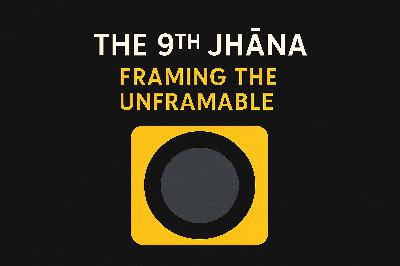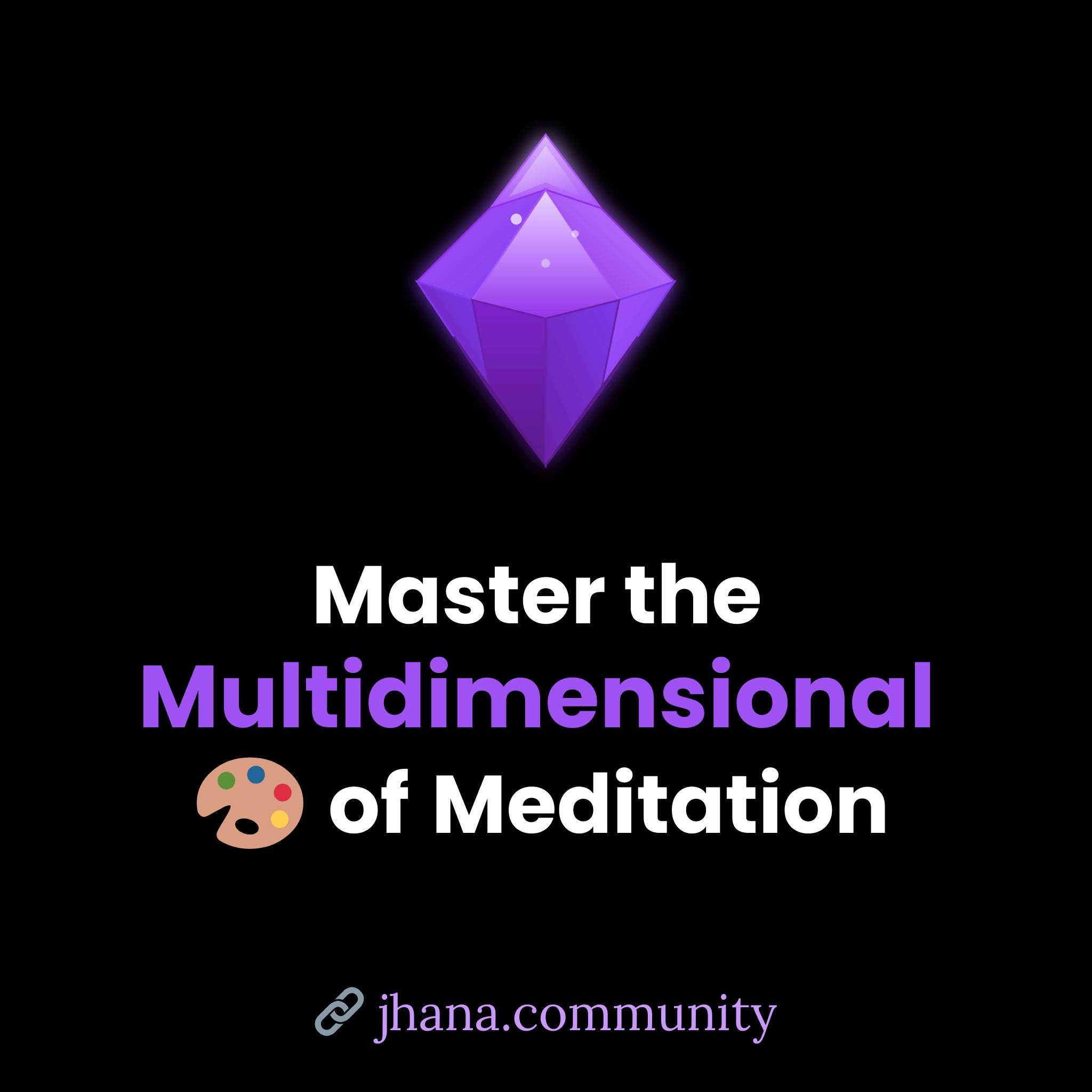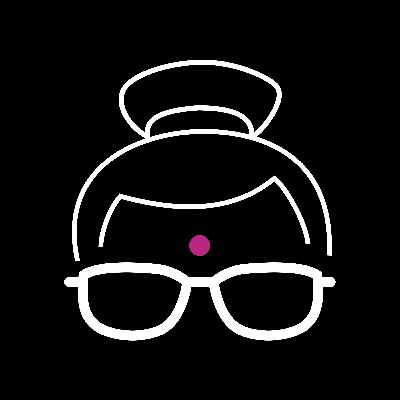The 9th Jhāna: Framing the Unframable
Description
Vince Fakhoury Horn: I was thinking about where to start with the 9th Jhāna, and I think the first thing to say is that the 9th Jhāna is not a state. So why in the world are we within a community of practice called The Jhāna Community, which is explicitly aimed at developing and cultivating certain states of mind, or states of consciousness, why would we be focusing on something which is not a state?
Let me let me share a little bit where this term came from. So I'm borrowing this term from a researcher who I spoke to some months ago. This is a researcher working on a project studying advanced meditation. They were asking me about my experience with jhāna's and then asked, “Do you have any experience with anything that would be considered like a 9th Jhāna, or anything beyond the eight traditional jhānas.” And I had to think about that because I'd never heard the term, “the 9th jhāna.” I'd heard other things, weird things, but I hadn't heard that one before, so I thought about it and I was like, “Well, I guess the only thing I would describe as the 9th jhāna is just sort of resting in awareness, or just being open and not doing anything, just being”, what I would normally in my own models call Awareness Meditation, and that is the spirit of this exploration today.
Want to explore the 9th jhāna with Vince Horn? Join him for another round of The 9th Jhāna in The Jhāna Community beginning September 30th, 2025.
The 9th Jhāna is an exploration of how to explore these states of consciousness that arise in meditation naturally and organically when the mind and body are settled, through the doorway of a very different kind of meditation object, which is not an object at all. We take awareness as our “object.”
Of course, awareness can't take itself as an object, right? If you could take awareness as an object, that wouldn't be awareness. It'd be some experience. With the 9th jhāna we're learning how to rest in awareness, to be aware of awareness. And there are lots of ways to do that, and there's lots of ways to think about that. So today I wanted to kind of just share a few different frames with you, uh, as an attempt to frame the unframeable. Awareness isn't something which we can frame properly because it's not an experience, or it's not a thing, or state. But we still have to talk about it. Because it's like the whole point of the Buddhist meditative tradition in a certain way. So how can we talk about something that doesn't fit into the normal categories of how we think about reality? One way I think we have to talk about this, and this is a longstanding conversation in the Buddhist contemplative tradition, is we have to talk about how we enter into this awareness of awareness. And there's a longstanding debate here between what in the Buddhist tradition they call the Sudden and Gradual schools. They're not actual real schools, okay. In fact, they're probably not really actual people who really believe either one of these extreme positions anymore.
But, over thousands of years, you could say a dialogue has been happening across these different lines of looking at how the path unfolds. And one of the so-called schools says that the path is a gradual process, it's something that you develop through time. In a book called One Dharma by a Teacher named Joseph Goldstein, he does his best to try to make sense of these different approaches and he describes this kind of approach where you're gradually developing stage by stage or step by step. He calls this the Building From Below orientation. But there's also, as he describes it, a way to Swoop From Above with Awareness. You don't necessarily have to spend 20 years and you know, five Goenka retreats, or whatever the amount of stuff that you did, before you realized the basic truth about awareness, which is: good luck trying to not be aware. Ken Wilber, one of my early mentors, he used to always point to awareness, he'd say, “Try to stop being aware of my voice.” And Ken talks a lot [laughs] and he'd just keep talking, talking, talking about how you can't not be aware. And it's true, it's hard to shut awareness off.
So here, how do we actually, suddenly realize that we're already aware? This is the Sudden School, which Joseph Goldstein described as Sweeping from Above. You could just realize it's already done. You're already aware, you're already awake. Sri Nisargadatta Maharaj, in a book called I Am That he said,
“To be aware is to be awake. Unaware means asleep. You are aware anyhow, you need not try to be. What you need is to be aware of being aware. Be aware deliberately and consciously, broaden and deepen the field of awareness. You are always conscious of the mind, but you are not aware of yourself as being conscious.”
I like this way of describing awareness practice, because in a way, he's integrating these two, the sudden and gradual approaches. He's not prioritizing one over the other. He's saying both are true. You're always conscious, right? So consciousness is always present, but you're not always aware that you're aware. You're not always conscious of your consciousness. And so there, that's the practice is being aware of being aware. That's it. That's what we're doing here. B. Alan Wallace in The Attention Revolution, another awesome Dharma book, that touches on awareness as a doorway into jhāna, he says,
“In awareness of awareness, there is no intentional directing of attention. You simply rest in that flow of knowing, and from time to time gently recognize that you are aware.”
I wish it were more complicated than that, sometimes I wish I could just lay it out like kind of like Daniel Ingram did in his book, Mastering the Core Teachings of the Buddha, and just give you the full, 400 page diagram detail of how to get into awareness. And I'm sure that book exists, and that might be a useful exercise. But for me, the practice is quite simple. And unfortunately, the thinking mind will tend to make this more complex than it is, and that tends to be one of the biggest obstacles that I've noticed in using awareness as a tool for entering into jhāna. So this is one way to look at what we're doing here with the 9th Jhāna. How is it that we're coming into this awareness? Gradually or all of a sudden.
Another way of looking at awareness practice, I think that's very important is that if you are taking a gradual approach, if you feel like there's some kind of movement or development or progression through time, what I've noticed is that that progression often takes one of two forms, and this seems to largely depend on the person and the tradition that they're practicing in.
One of the ways, in the Christian contemplative tradition, they call this Via Negativa. In the Hindu tradition, they call this Advaita, which is you take all of the experiences that are rising and you recognize that you are not any of those, because they're objects, because they're arising, because you can know them. That means they arise in time that they're changing, and they will vanish. This is the basic truth of vipassana, right? Mindfulness. Yeah, so we can recognize that and we recognize anything that we can be aware of is not ultimately who we are. This is the process of, Neti Neti, as it’s said in Sanskrit, “Not this, Not this.”
With this approach you're backing away from the untruth. You're backing away from everything that is not you. You're letting go of all those objects and just resting in awareness that's devoid of any characteristics. Devoid. That's important. This is the path of the void. Not this. Via Negativa. Then on the other side though, you have the opposite path, Via Positiva. “This too, This too.” Nothing is excluded. Anything that arises that appears to be apart from you, you include it in awareness. You fold it back into awareness and see that thing that I thought was out there, over here, this too! Shunryū Suzuki Roshi in Zen Mind, Beginner's Mind, he says, “That everything is included within your mind is the essence of mind.” So, here we're recognizing that everything that arises in the mind is the essence of mind.
Another quote from Sri Nisargadatta Maharaj, in I Am That:
“The mind produces thoughts ceaselessly, even when you do not look at them. When you know what is going on in your mind, you call it consciousness. That is your waking state–your consciousness shifts from sensation to sensation, from perception to perception, from idea to idea, in endless succession. Then comes awareness, the direct insight into the whole of consciousness, the totality of the mind. The mind is like a river, flowing ceaselessly in the bed of the body; you identify yourself for a moment with some particular ripple and call it: ‘my thought’. All you are conscious of is your mind; awareness is the cognizance of consciousness as a whole.”
Awareness is the cognizance of consciousness as a whole. Again, we'll use this as our kind of broad definition for what it is that we're meditating on. And of course we don't meditate on awareness. We meditate as awareness. There's no way to take awareness as an object. You can only be that awareness.
So how do you be aware? Well,























